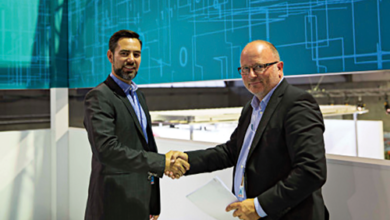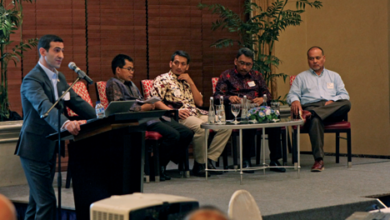Considerable gains can be made in project cost reductions, schedules by shortening supply chain, aligning business goals
By David Reid and Tom Yost, National Oilwell Varco; Ian Russell; T. O. Cheung, Keppel Offshore & Marine USA
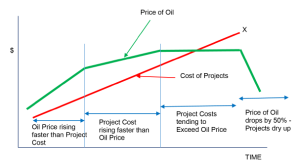
Over the past decade or more, the cost of offshore projects has escalated significantly. The elevated price of oil masked the increases, but this issue is now clear as it becomes a barrier to project approval.
Edward Merrow, President of Independent Project Analysis (IPA), in his recent book “Industrial Megaprojects” has made a detailed analysis of data on a range of global megaprojects (over $1 billion) and found that oil and gas projects had an extremely poor record.
Both project cost and schedule performance have overruns in the 30-40% range (Figure 1), but what is even more alarming is the 75% failure rate of projects to deliver expected business results.
While poor planning and execution can cause major cost overruns and schedule delays, one of the biggest unknowns that contributes to this high failure rate is the reservoir risk. While there has been some work done on improving the situation, such as tightening up on project controls, such efforts tend to fall into the category of trying to “do the project right,” where there is more work and value to be done in the development of how we approach and plan to execute the project. This viewpoint requires us to look at the fundamental changes in how projects are developed at their earliest stage to allow for different approaches that may avoid or mitigate the problems of budget, schedule and performance.

In most major offshore developments, the well delivery cost is one of the major components of capital expenditure (CAPEX). This article focuses on the area of drilling facilities, including drilling equipment package design, purchasing and operational performance of the systems.
In the case of the platform rig (operator-owned asset), the drilling units tend to be customized and optimized for what geologists and reservoir engineers think the wells’ requirements, number, size, depth, life, etc, will be over the service life of the field. However, in many cases, the real production rate and recoverable reserves are amongst the largest unknowns when a project is sanctioned. The net result is that optimization efforts may be wasted as the highly specified characteristics of the well change.
On the other hand, the use of jackup MODUs as a means of drilling and servicing platform facilities has become a norm where the water depth permits. In this case, the drilling systems used on these wells on the jackup are not optimized for a single field or well but are designed to be flexible to handle a wide range of drilling operations. At the same time, the rapid development of jackup drilling systems over the past decade or more has led to drilling efficiencies through new technologies while reducing CAPEX through standardization, which has not occurred in the custom-designed platform rig business. The systems used for drilling the same wells are very similar and highlight an excellent avenue to understand the potential value that recent construction experiences of MODUs may bring.
The development of integrated project teams
Project #1 – A cost crisis drives behavior change
The collaborative relationship between the critical players in the execution of Project #1 started between an equipment supplier and a drilling contractor. The relationship was challenged by the operator, who had attempted to budget a platform drilling facility in Australia in the mid-’90s. Following a number of pre-FEED studies that continually ran the project outside of the financial constraints, the operator challenged the drilling contractor and supplier to deliver the project collaboratively – eliminating the specification and design development work traditionally executed through an engineering firm.

There was a movement in platform design during this era toward new technology that added complexity to the design of drilling rigs. Many of these projects were struggling to meet key construction goals from a supply chain standpoint. These projects eroded margins from the suppliers and shipyards due to the increased computer controls, interfaces and mix of different components that all deepened the complexity of design. Adding the burden of new specifications from the engineering house and operator’s standard practices further increased the level of complexity. The price of platform equipment developed a tendency toward cost increases at the bid stage, but the ever-developing design specification and multiple players made costing these projects difficult. In a commercial bid, a decision was often made by the supply chain to risk those margins to become accepted as the bid winner.
The change in contracting strategy on this particular project was ultimately a success, largely based on a new level of cooperation and a deeper level of trust between the driller and supplier in the lead-up to Project #1 (SPE 35044-MS). The operator took a critical position to facilitating this success by accepting the systems as fit-for-purpose while meeting traditional drilling standards for MODUs and other platform construction. The project team all aligned around eliminating customized solutions and focused on drilling facility capabilities, while introducing the additional engineering and documentation burden in to the driller and supplier, consolidating hours of interface, and additional communication and system gymnastics out of the build program.
Lesson: Alignment between the drilling contractor and supplier solved the cost challenge of constructing a complex drilling facility (SPE/IADC 151350).
Project #2 – Partnership transitions to the Gulf of Mexico
Project #2 in the Gulf of Mexico began with a series of relatively standard TLP platform packages that followed Project #1.

The simplified contracting model for the development and construction of the drilling facility on Project #1 was emulated on Project #2 by a different international oil company, taking advantage of the evolved driller and supplier integrated relationship. In this project, a similar approach to integrated engineering was used and introduced a continuous improvement model managed by the drilling contractor from rig to rig that was highly effective as the series developed.
Although significant lessons were learned in these examples, oil companies quickly returned to the traditional model: construction, specifying, engineering and bidding all the components, delivering a unique platform drilling facility each time. The resistance to a new model was driven by concerns around the complexity of the wells and process facility. The well spacing, loading, custom production facilities, incomplete well profiles and regional specification variability all came in to play. The practice of repeat designs in a series became a repeated idea. Multiple designs, however, did not seem to have duplicated the package success of Projects #1 and #2 due to maintaining the unique specifications that left eroded margin recovery at the core of the projects.
Our analysis found that following the standard MODU design approach can eliminate many of these concerns. The challenge is strong leadership and a willingness to fight the cultural norm.
Lesson: The barriers to change can be overcome but only with clear communication and strong empowered leadership.
Key learnings are:
1. Utilize lessons learned from all parties to reduce cost and included modern drilling technology (OTC-8375-MS).
2. Oil company opted to eliminate the bid/evaluate/award cycle and employ a single-source, integrated team with a design-while-build philosophy.
3. The driller, supplier and shipyard identified longer-term business relationships as an incentive for future collaboration and flexibility.
4. Collaborate to manage risk.
5. Plan a one-month period of competency evaluation, and a shake-down of the system was carried out within the shipyard after completion of construction.
6. At the conclusion of each of the rigs, costs were collectively reviewed to make sure all parties were adequately fulfilling the financial responsibility to their shareholders, and then adjusted to make sure all parties succeeded in the next construction project.
7. Interface engineering was handled between the drilling contractor and the suppliers.
8. Supplier standards were accepted as the standard.
9. Single supplier accountability improved the system ownership level of the supplier to the drilling contractor project team.
The results from Projects #1 and #2 were unprecedented successes, where both time and margin improved as content from the engineering firm was strictly managed to provide value in interface to the facilities. The projects delivered early field start-up success at record low costs.
In the deepwater construction boom in the late 1990s, the only drillship design delivered on time and on budget was designed following this model. The drillship risk management utilized the layout and machines from Project #2 and minimized the scope of the engineering firm to value-based interface control between the drilling facility and the vessel.
The same oil company that built these TLPs eventually changed drillers and practices, struggling to match the success of the original project.
The next possible opportunity to take the lessons learned forward was on multiple jackups where a proposal for standard drilling facilities came from the supplier involved and was brought to the management team of a Singapore-based jackup builder that had been involved in the construction of Project #2. The partnership between the supplier and shipyard, along with an agreement on standard, fit-for-purpose design could change the paradigm of delivery and budget. This led to the shipyards and suppliers attempting to manage the process together. The TLPs described in this article as Project #2 were a successful result of key factors that broke a dysfunctional business model and were foundational in developing the guidelines for success, which delivered standard MODUs in the 21st century under the builder-furnished equipment (BFE)-based business model.
Project #3 – Further eliminating costs
Following the successes of Projects #1 and #2, a similar TLP in West Africa was produced that had a similar success in terms of staying within budget and on schedule. From public information, it appears the gross cost of the project was more than double that of Project #2, and the driller experienced poor financial performance. Unlike Project #2, they used a lower-priced bid from a driller trying to enter a new business segment, adding engineering, procurement, installation and commissioning (EPIC) to their drilling contract. In the end, Project #3 caused both drillers to exit the platform construction business. Project #3 was a similar multi-rig “standard” package, but a critical error occurred in using multiple shipyards with limited experience and no support facilities.
In an attempt to use purchasing muscle and hit the financial targets of the project, errors were made in selecting a new-entrant, lowest bidder who, in turn, opted for multiple yard selection. The capability, as well as relevant engineering experience within the drilling contractor and yard to bid and execute, were below what was needed.
Lessons: Purchasing-driven models can undermine project success, and experienced partners are key.
A simple analysis tool can help identify the fundamental existence of this dysfunction by identifying a gross-cost-per-ton model. The cost per ton compares two identical drilling systems, one within a platform drilling support module and derrick equipment set compared with a comparable complete jackup that contains identical drilling characteristics while including the vessel package, which is not in the platform assessment. This highlights an important total cost variable within the execution models and an opportunity to understand the difference between the two TLP outcomes and the remaining opportunities for more efficient models.
Although Project #3 met its goals, there appears to be significant room for cost improvement in the drilling facilities designed and delivered on platform rigs compared with jackups that meet the same drilling criteria and contain additional deck space, vessel, jacking systems, legs and accommodations, yet still are lower cost.
Looking at the lessons learned from Project #3, the advantages were:
1. Alliance formed to incentivize the driller/supplier relationship helped in managing standards and eliminating project-related variances.
a. First on-time delivery of all equipment systems for a platform to the yard.
b. Service and spares support have benefitted during start-up and operations.
2. A long-term relationship between the new drilling contractor and the supplier was established and helped collaboration.
3. Change orders were managed and, if possible, eliminated on a weekly basis.
4. Standard installation goals were set against fixed price and open-book timekeeping between the driller and supplier.
5. Integral design work occurred exclusively between driller and supplier.
6. New product design was eliminated within the supply unless field-tested prior to supply.
Disadvantages were:
1. The operator and shipyard relationship was based on best price for Project #3 (significantly lower than competitors), and the entirety of the project became a fight to recover margins.
2. The shipyards were not all equipped to deliver the level of project management or facilities needed for construction.
3. Most parties experienced financial losses in delivering the drilling packages.
4. The drilling company exited the platform construction business, and company management changed following the project.
5. Inexperienced businesses interested in growing into EPIC may pose risks to final deliveries.
Lessons: Communication and commitment of each partner to the other’s financial success is critical. Multi-rig construction is best achieved when repeat rigs are built in the same location.
A deeper dive in to the effects of integrated supply
Project #4 — Project-driven construction (traditional model)

A key focus on any drilling package is the drill floor arrangement and equipment suite. Prior to the drilling equipment manufacturers merging together to form top-down, integrated equipment package suppliers, the industry was forced to choose a diverse selection of drilling equipment. This yielded complex platform rig packages integrating six or more vendors.
This was a necessity as the industry did not have a single drilling equipment manufacturer that could deliver this suite. At first glance, the drilling packages appeared similar to any semi-automated jackup rig floor. However, a closer examination of platform rigs showed a complex bid specification, supply chain and engineering process that resulted in an arduous equipment integration in the shipyard.
Upon completion in the shipyard and final commissioning on the platform rig, the equipment was a year or more out of warranty and resulted in service and support vendors pointing fingers at each other on the rig floor due to the challenge of multiple interfaces. Engineer drawings are key deliverables to a construction project and, in these cases, there could be 10 or more revisions during the engineering submittal and review process. As a result, it may be up to five years between first drawing submittal and drilling in the field.
Project #5 — Industrialization of construction (new model)
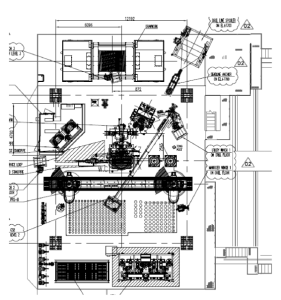
Over the past 10 years, mergers and acquisitions have resulted in equipment suppliers that can deliver a fully integrated drilling package. These are built around integrated drilling control systems that allow the key components to work together and address the system performance and uptime needs of the operators.
During this same time, a suite of drilling contractor-owned and shipyard-engineered semi-automated jackups have been built with standard equipment suites that are integrated from one vendor during the design, engineering, testing, installation and commissioning phase. These have been delivered on time and on budget and allowed the industry to fully utilize this technology to increase drilling efficiency. Now focusing on the deliverables associated with this equipment suite, only one or two revisions are made within the key drawing packages. The estimated time frame from drawing submittal to drilling in the field is approximately three years.
Compared with Project #4, there is a two-year variance in engineering-to-drilling time. This is compounded by layers of bureaucracy entwined in the engineering and drawing revision process.
Lessons: The BFE standard model delivers significant value with on-time, on-budget projects as a result of project industrialization. Jackup and platform drill floor layouts are functionally identical.
Understanding the traditional model
Cost and complexity

The foundational principle that contributes to cost escalation in drilling facilities in platform construction has been the age-old practice of mixing and matching of products. This experience was also characterized in the traditional model of MODU construction and remains the norm for the modern drilling platform. When comparing the costs associated with projects, it can be viewed from the perspective of manhours for each project (Table 2).
Standard industrialized jackups use existing product and interfaces to deliver a more efficient and lower-cost drilling package than is produced on a platform rig. While the two are somewhat similar, the customization on a platform costs more than a jackup. In return, platforms produce the same drilling facility, but the costs are higher. From the equipment supplier perspective, a standard jackup has an estimated 20,000 manhours associated with it. When working on a fixed platform, they have 175,872 manhours. With the jackup, there is clear alignment on minimal variance and reduction of risk, which leads to greater collaboration and joint effort in working on the project rather than the latter, which has little collaboration.
The motive of the supplier and shipyard is business driven. Standards and productivity deliver improved profitability for each of them. Engineering firms, on the other hand, are rewarded for managing complexity. The business impact of delay to both supplier and shipyard works against their operational need for productivity in an industrialized model.
In the MODU space, nearly all rig equipment is sourced as fully integrated, single-supplier packages. To date, more than 300 MODUs have been delivered without issue. By contrast, the few that were not single-supplier, fully integrated projects, as well as the ones with new invention, all experienced delivery issues. Platform rig projects have experienced similar issues, particularly in terms of cost overrun.
Duplication without Industrialization

These overrun issues have also anecdotally happened on recent duplicate standard packages that were fully integrated, single-supplier designs. The decisions within the system to standardize had the opposite effect of Project #2. Each saw misalignment of objectives in project management and engineering. The business and technical mechanisms that produced on-time, on-budget platforms is virtually unreachable without a radical change in collective methodology and leadership. These projects have discovered the frustration of duplication without industrialization of the drilling facilities, which does not produce the desired outcome.
Lessons: Industrialization of projects is critical to eliminating costs and delivery overruns. Supply chain integration includes supplier self-interface responsibility and use of standard specifications.
Analysis of current behaviors

As with almost every offshore platform researched, the negative results or lessons learned from the construction process do not appear, except through anecdotal stories. Early in this cycle of complex drilling facilities, a paper from the Shell UK NDES project in 1997 may be the only documentation that sheds light on the challenges of running such projects (SPE/IADC 52767). Typically, it is only within closed doors, at the higher levels within oil companies, that challenges seem to be most freely discussed. In this study, it was possible to discuss lessons learned through one-on-one conversations but proved more challenging to produce official documentation from within the projects and meet review requirements from those involved.

Most valuable knowledge was occurring at a level below the operator, making understanding and resolution difficult to take charge of within the operating company as it was often beyond the reach of the project leadership. There was a strong understanding of the problem and an interest in solving it going forward within all operators.
With a sample size of 300 industrial projects, IPA concluded in a study that 65% of industrial projects with budgets over $1 billion failed to meet business objectives. As noted, the failure rate in the oil and gas sector is substantially higher than others in the study, yet the industry has struggled to alter the way it executes projects. Nevertheless, there is an opportunity to observe change from the recent industrialization of standard drilling packages on MODU rigs. New methods for mitigating risk have been learned, and the industry itself has discovered that changing the shipyard-supplier relationship eliminated MODU cost and time overruns that were pervasive in the late 1990s.
Why are we dysfunctional?
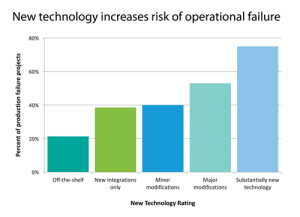
The intention of platform design and build practice is to utilize the available experienced facility architects to deliver a highly effective and state-of-the-art asset while maintaining a safe and secure operation. The challenge is the project evolves to focus on the polarizing singular task of a megaproject delivery, managing complexity. The challenge requires a robust supply of experienced engineers, in a flexible business model, designed to size up and down as needed during the project. That model works well for delivering an engineering marvel of complex offshore technology. The challenge of this article is to question this behavior and to focus on how we might reduce complexity and integrate supply. The fear remains that if we start to loosen the control and process mechanisms that we know so well, a major catastrophe may occur. What erodes in our effective process is loss of focus on the original goals of managing cost and delivering an end product as efficiently as possible.

The challenge with drilling facility complexity is the method that a platform uses to manage the project is logical and involves creating critical project standards. Within the context of a platform design, it makes sense that the total facility should have the same standards. The rules for platforms are also more stringent than MODUs. However, stringent rules open the door for more complexity within the system without checks and balances. The reality of modern drilling facility design is that the drilling systems have evolved to become a single standard drilling package in their own right within the MODU environment. Almost 100% of MODUs are single supplier sourced by shipyards, and still within platforms custom engineering to a platform standard facilitates a now-archaic mix-and-match system based on project preference.
Most experienced professionals who specify drilling facilities have not been active in operations. They develop preferences without experience with modern efficiencies.
The platform engineering culture creates a heavy interface and system burden on the engineering house, which increases the complexity when our industry has already evolved beyond this model. Within the platform specification, the engineering cost and schedule burden swells as each standard product within a package is changed and reengineered to meet unique designs and new design standards when the original product is a widely accepted fit-for-purpose design.
The platform standards evolve from a reasonable logic. Each asset is full of unique wells with high levels of variability and uncertainty to consider. The total facility should be designed to fit the production, which is true of the facility but may not be necessary for the drilling facility.

The complexity of a well-based design facilitates more complexity and could be avoided if drilling rig designs were standard across the industry. The suppliers have a range of products that facilitates at least three viable standard supply packages. These could be supplied to platforms as single pre-designed packages, as has occurred within the MODU fleet. Almost all MODUs are operating well within their capacity, and none are designed based on one well.
Lesson: The same logic used in industrializing drilling packages for jackups could be applied to platforms.
Without the intended outcome, this well-oiled system is designed to cope well with resolving and controlling unexpected ambiguity, unresolved design conflict or change, whereas best-in-class industries focus on communication, simplification and eliminating waste. The success seen in MODU construction has not been replicated in platform development because the older EPIC models are deeply ingrained in the project ecosystem. The players in each individual project all bring a unique culture based on past experiences. The project leadership was challenged in Projects #2 and #3. In Project #1, culture was a singular driver and, in Project #2, the price and survival behavior became problematic for the supply chain involved.
Lesson: Industrialization of a project includes the cultural development of alignment, communication, simplification and eliminating waste.

The practice of engaging professional project companies on megaprojects has inadvertently enabled excessive risk to exist around the efficiency of constructing drilling facilities. These firms have minimal assets directly at stake. The purpose of these organizations is to create concentrated expertise to deliver complete and functioning packages and supply process to manage complexity. In reality, the ecosystem of this business model has consistently under-delivered for the simple unintended driver of business compensation alignment within engineering houses who are rewarded for managing complexity over on-time, on-budget delivery. The integrator controlling the large scope is not motivated to adopt industrialization because it is a significant change of practice, which would be seen as increased complexity.

In each project, the business motive and lack of recent MODU experience can cause a misalignment with a new way forward to meet the final deliverable. Engineering firms have a critical role to play, but the operator has the ability to change their practices around the drilling package. The model is clearly needed to manage the high risk of any failure; however, more work has to be done on practices that create complexity. Over time, the system has delivered many difficult facilities without major catastrophe. As such, there is little desire by anyone to upset the model. The oil price may have covered our tracks in this behavior but the current climate, like the mid-’90s, is presenting opportunity for change.
Inadvertent risk amplification
Based on information from experts in the field who have worked on new rig construction projects, the complexity that stems from engineers’ efforts to improve the existing design creates excessive risk that often outweigh the value of change. The risk of project failure is multiplied when there is new technology (or first-time design) being used during development.
The engineering house looks at new technology as something to avoid, whereas the industrialization process looks at it as an opportunity to be assessed on whether it can make a difference and warrant a change in behavior.
Learning from MODUs
The prime method for approaching and overcoming misalignment began with a senior leadership discussion between a manufacturer and shipyard around 2003. Developing an honest dialogue has less to do with process and more about a softer skill of relationship honesty and significant concern for the other’s business model succeeding.
Conclusions
To challenge facility deliveries, it takes leadership to drive change. In making the right business decisions, it is often feared that safety, integrity or performance will be compromised. In fact, quite the opposite can be true. The decision has to be made to discard an archaic model of managing complexity to adopt a design-build model that integrates strong and able partners, as well as project deliverables that reduce time and complexity challenges. Under such an industrialized process model, successful business alignment is created by the elimination of silos and handovers, along with the implementation of structured processes and the building of effective teams through healthy communication practices and longer term relationships.
Adopting these methods will offer the benefits of industrializing the MODU projects over the past 10 years into the platform drilling facility. The broader megaproject culture in the oil and gas sector could also be a benefactor of such changes in behavior.
Factors of a successful projects are:
1. Alignment of business goals.
2. Clear definition of responsibilities for more integrated modular deliverables.
3. Genuine interest of every party having a successful business.
4. Commitment to deliver and collaborate longer than the life of the facility.
5. Obsessive communication and action that supports controlled and evaluated change decisions.
6. A commitment to eliminate over-management and complexity wherever possible.
7. Selection of experienced, key players that includes operational experience and regional knowledge, as well as proven agility in best practice leadership.
The information contained in this article suggests there are considerable gains to be made in project cost reduction and schedules by shortening the supply chain and creating a closer relationship among oil companies, engineering firms, drilling system suppliers, and rig builders. This has been very effective in the MODU business, and the authors strongly believe that these lessons can be translated into the supply of platform rigs.
A new standard rig can be identified by looking at a broad set of future wells and developing a class standard with acceptable levels of over-design to reduce complexity within platforms. The final study reveals that many EPIC projects have similar characteristics and could have been built with a standard template. This standardized template will allow us to share lessons learned and benefit from faster, lower cost overhauls and generic off the shelf spare parts. The new way forward will take some bold steps, but the past tells us we have delivered these results before. We just need to take the lead and work better to serve each other’s goals through better business alignment and open dialogue.
Lesson: Never underestimate the soft skills of relationships to develop the required levels of trust. DC
This article is based on IADC/SPE 178902, presented at the 2016 IADC/SPE Drilling Conference and Exhibition, 1-3 March in Fort Worth, Texas.


